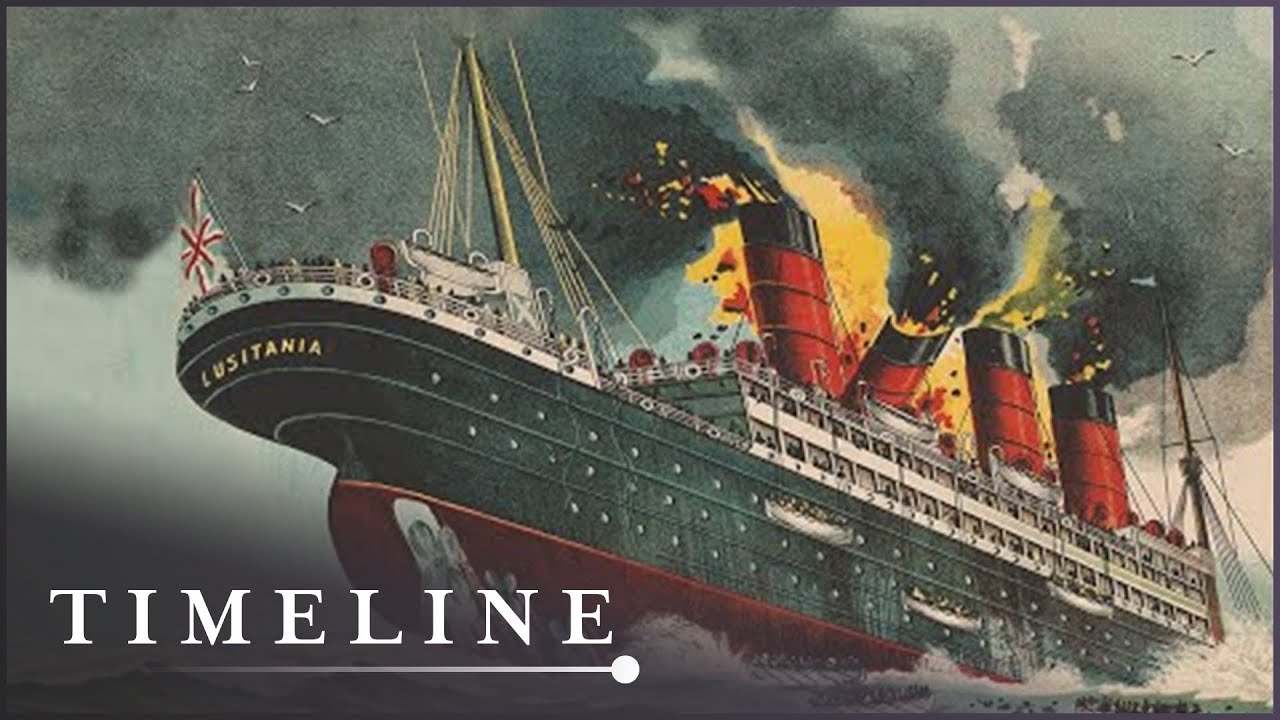On May 7, 1915, the world was shaken by the tragic sinking of the RMS Lusitania, a British ocean liner, by a German U-boat, U-20. This devastating event occurred during World War I and had a profound impact on maritime warfare, civilian casualties, and the course of history. The sinking of the Lusitania remains a somber reminder of the human cost of war and the vulnerability of innocent lives caught in the crossfire.
The RMS Lusitania, at the time of its launch in 1906, was one of the largest and fastest ocean liners in the world. It was a symbol of technological advancement and luxury travel, capturing the imagination of people worldwide. However, as tensions escalated during World War I, the Lusitania’s fate would be forever altered.
On its final voyage, the Lusitania departed from New York on May 1, 1915, bound for Liverpool, England. Unbeknownst to the passengers and crew, the waters they were about to navigate were fraught with danger. Germany had declared a war zone around the British Isles, warning that any vessels entering the zone would be at risk of attack. Despite this warning, the Lusitania continued its journey, with many passengers unaware of the impending peril.
The German U-boat U-20, under the command of Captain Walther Schwieger, spotted the Lusitania off the coast of Ireland on May 7. Seeing an opportunity to strike a blow against British interests, Captain Schwieger launched a torpedo at the massive ocean liner. The torpedo struck the Lusitania below the waterline, causing a massive explosion and unleashing chaos and panic among the passengers and crew.
The sinking of the Lusitania was swift and catastrophic. Within just 18 minutes, the once majestic ship plunged beneath the waves, taking with it the lives of 1,198 people, including 128 Americans. The loss of innocent lives, many of whom were women and children, sent shockwaves around the world and fueled outrage against Germany’s submarine warfare tactics.
Of the approximately 1,959 individuals, including both passengers and crew members, who were on board the RMS Lusitania at the time of its sinking, an estimated 764 people managed to survive the tragic incident. This means that a significant number of individuals, around 1,195 passengers and crew members, lost their lives in the sinking. The survival rate was impacted by various factors, including the rapid sinking of the ship and the limited availability of lifeboats.
On the other hand, the survival stories that emerged from the sinking of the RMS Lusitania are both harrowing and inspiring. Amidst the chaos and panic that engulfed the sinking ship, acts of heroism and selflessness were displayed by individuals who fought against all odds to ensure their own survival and the survival of others.
Passengers and crew members demonstrated incredible bravery as they faced treacherous conditions and the imminent threat of drowning. Many found themselves in a race against time, scrambling for lifeboats or any floating debris that could serve as makeshift rafts. Some helped fellow passengers, including women and children, to safety, even at the risk of their own lives. These acts of courage and compassion amidst the chaos and despair stand as a testament to the resilience of the human spirit.
Among the survivors were individuals who showed exceptional bravery and resourcefulness. From swimming long distances to reach nearby shores to clinging onto debris until rescue arrived, their survival is a testament to their determination and will to live. These heroic individuals, often facing exhaustion and the loss of loved ones, demonstrated unwavering strength and resilience in the face of tragedy. Their survival stories continue to inspire and serve as a reminder of the indomitable human spirit in times of crisis.
The sinking of the Lusitania was not only a tragic loss of life but also a pivotal moment in the shaping of public opinion and the eventual entry of the United States into World War I. The sinking outraged the American public, who saw it as a ruthless attack on civilian life and a violation of international laws. The incident further strained relations between the United States and Germany and played a significant role in shifting public sentiment towards war.
In the aftermath of the sinking, investigations were conducted to determine the causes and responsibilities. The sinking of the Lusitania raised questions about the ethics of submarine warfare and the protection of civilian vessels. It also highlighted the need for clearer guidelines and regulations to prevent future tragedies.
Finally, the sinking of the Lusitania served as a catalyst for change in the conduct of maritime warfare. It contributed to the eventual implementation of convoy systems, improved naval defenses, and the development of international laws and agreements to protect civilian ships during times of war.
In conclusion, the story behind the tragic sinking of the Lusitania serves as a poignant reminder of the devastating consequences of armed conflicts on innocent lives. It stands as a testament to the fragile nature of peace and the profound impact that individual acts of violence can have on the course of history.
Today, the sinking of the Lusitania is remembered as a solemn chapter in maritime history, symbolizing the human cost of war and the need for greater efforts towards peace and understanding among nations. The lives lost aboard the Lusitania will forever be honored and serve as a reminder of the importance of safeguarding innocent lives, even in the darkest times of conflict.


